#ecdysozoa
Explore tagged Tumblr posts
Text


This animal was requested!
#animal polls#panarthropoda#ecdysozoa#velvet worm#weird animals#poll blog#polls#my polls#tumblr polls#invertebrates#invertiblr#terrestrial invertebrate#onychophora
191 notes
·
View notes
Text
Phylum #11: Priapulida, the penis worms!

It is the late Ediacaran. For thirty million years, enigmatic creatures have peacefully grazed on microbial mats - unique ecosystems where layers of photosynthetic bacteria covered the shallow seafloor. And then the penis worms arrived.
Priapulids were among the first animals to start digging inside the substrate at a large scale. Unlike previous creatures, their burrows were vertical, not horizontal. Disturbing the microbial mats in depth and oxygenating the substrate, they set the stage for life to diversify in a new ecosystem. The Cambrian substrate revolution had begun.
530 million years later, priapulids - named after the Greek god of fertility - survive as one of the three scalidophoran phyla. The only ones to still reach massive sizes, some species can be up to 40 centimeters long!
While they do not have plated armor or complex spines like their cousins, they share the ability to extend and retract their spiked head. They also live in or near the seafloor, often hunting for sea worms which they catch with their toothed, eversible pharynx. Their body often ends in complex tail appendages, believed to act as gills thanks to their large surface area.
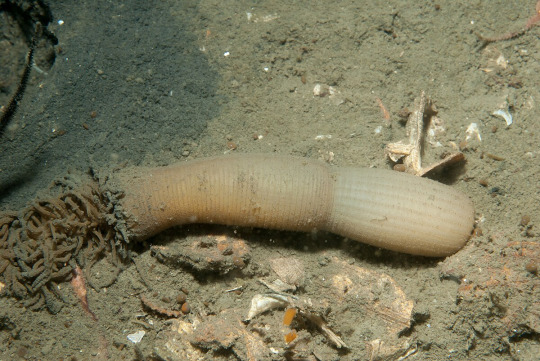
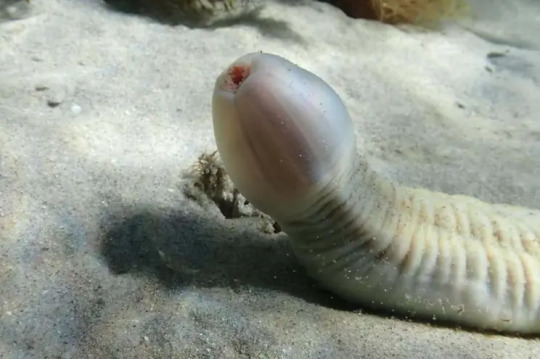
#forms and phyla#priapulida#penis worm#palaeoblr#taxonomy#evolutionary biology#scalidophora#ecdysozoa
324 notes
·
View notes
Text
@koopaspiderofdarkness tag urself i’m the freak

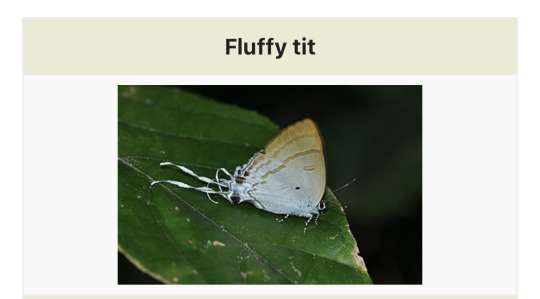

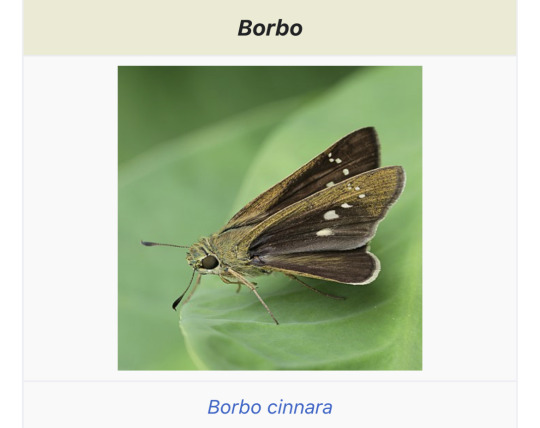
some guys idk
54K notes
·
View notes
Text
Wet Beast Wednesday: tardigrades
Last week on Wet Beast Wednesday I covered the largest animals to ever exist on our planet. This week I'm going to pull a full 180 and cover the smallest animals yet on this series. Meet the tardigrade, the internet's favorite micro-animal the is said to be basically immortal. How true is that? Let's see.
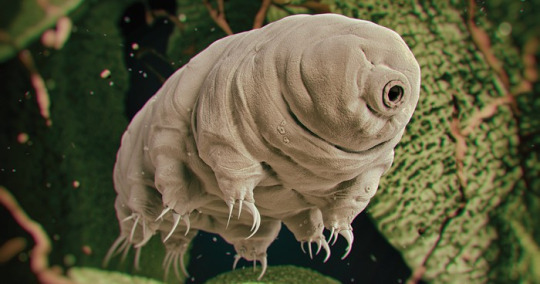
(Image: an electron microscope image of a tardigrade. It looks a lot like a potato with eight stubby legs tipped with long claws. At the front is a small, circular mouth. It has no other discernable features. In the background are bits of plant matter that look like seaweed at this scale. End ID)
The tardigrades are 1,300 known species (and probably a lot of unknown ones too) in the phylum Tardigrada. They are also part of the superphylum Ecdysozoa, which are animals that grow by molting their outer cuticles or exoskeletons. In particular, the tardigrades are believed to be a sister group of the arthropods, the group that contains crustaceans, insects, isopods, and a lot of other things. Tardigrades are truly tiny, the largest species reaching a whopping 1.5 millimeters in length, though most species reach no more than 0.5 mm. They have round, segmented bodies with four pairs of legs that end in either claws or suction discs. The body segments consist of a head, three body segments with a pair of legs each, and a caudal segment with the final pair of legs. The first three legs are used for movement while the final pair points backwards and is used for grabbing onto substrate. All of the body segments except for the final one correspond to segments found in the head section of insects. Tardigrades are missing many hox genes, genes that direct the body plan during development. Their ancestors may have had a body plan more similar to insects, but the loss of the hox genes has compressed them into walking heads with a bit of butt. The mouth is tubular and sucks in food. In the mouth are stylets, needle-like structures used to pierce food objects. Once food is drawn into the mouth, a structure called the buccopharyngeal apparatus activates. This is a combination of spines and muscle that acts like an inner jaw that pulls food into the digestive tract. The buccopharyngeal apparatus is distinct enough to be used as a major identifying feature between species. Tardigrades are translucent and many images you've seen of them have false color to show the details or are 3D models based on scanning electron microscope imagery of them. Tardigrades molt their exoskeletons multiple times (up to 12) during their lifecycle. Some species are unable to poop normally and instead all their waste is discarded during the molt. It was formerly believed that tardigrades could exchange genes with each other without mating, a process called horizontal gene transfer that is seen in bacteria, archaea, and other micro-organisms. It has since been discovered that while still capable of horizontal gene transfer, it is quite a bit rarer in tardigrades than we thought.
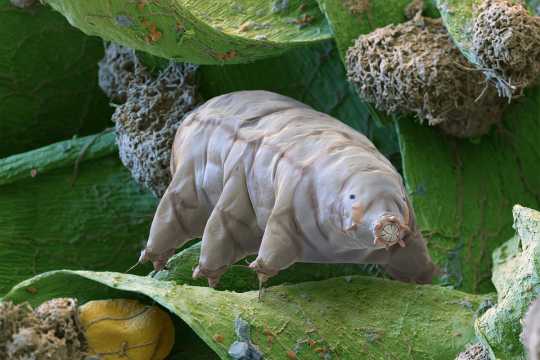
(Image: an electron microscope image of a tardigrade standing on a bit of plant matter. This one has a closed mouth with a ring of triangular tooth-like structures. It also has two simple eyes that look like black dots. End ID)
The name "tardigrade" means "slow walker", which is fitting as, despite their eight legs, tardigrades have a slow and awkward gait. This is the result of their legs being unjointed, only able to pivot at their connection to the body. Their gait has been compared to that of bears, hence why they are often called water bears and their discoverer, Johann August Ephraim Goeze, called them "kleiner wasserbär", meaning "little water bear". Tardigrades are found worldwide and have inhabited virtually every habitat, from the tops of mountains to the deep sea, from hot springs to the antarctic, from freshwater to saltwater. The one thing they have in common is a need to stay wet. Tardigrades can survive out of water as long as they can stay moist and are often found in mosses, hence another common name: moss piglets. The majority either eat plants or bacteria, but some will feed on smaller tardigrades or other micro-animals. Their famous survivability makes it easy for tardigrades or their eggs to be carried to new habitats by larger animals or other phenomena. Tardigrades are one of the first micro-animals to colonize a new habitat and they are a pioneer species, the first species to colonize a new environment and whose presence makes that environment fore suitable for other species to follow. Tardigrades are a major food source to other micro-animals and larger organisms. Most species have distinct males and females, though a few reproduce through parthenogenesis. In most cases, molting female will lay her eggs in her shed cuticle and males will them fertilize them. Other species have a form of internal reproduction. Males and females will court each other before mating and females will usually allow multiple males to fertilize her eggs. Female tardigrades are typically larger and more abundant than males. Eggs can take up to 14 days (species dependent) before hatching. All tardigrades of the same species have the exact same number of cells as each other. They are also born with the same number of cells they will have as an adult. Their growth is driven by enlargement of the existing cells rather than cellular reproduction making new cells. The lifespan ranges between a few months to a few years, depending on species.
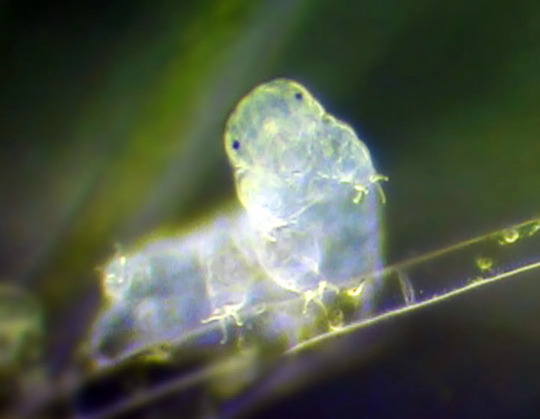
(Image: a color photo of a tardigrade. It is a pale, translucent white, making it hard to make out details. Its body is curved, with the front end pointing at the camera. It has two simple eyes. End ID)
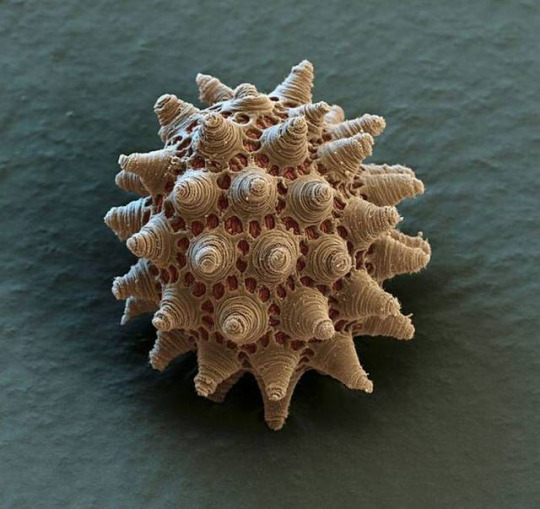
(Image: an electron microscope image of a tardigrade egg. It is round but covered in small pores and conical structures. End ID)
The most famous feature of tardigrades is their legendary durability. It is commonly said that tardigrades can survive just about anything (except for the things that are actually trying to kill them. They are prey to a lot of species after all). Among the things they can survive is extreme heat, extreme cold, dehydration, extremely high and low pressure, exposure to ionizing radiation (that's the scary kind), low oxygen environments, environmental toxins, heavy impacts, and the vacuum of fucking space. While the can survive in extreme conditions, tardigrades are not considered extremophiles. True extremophiles thrive in extreme environments and are negatively impacted by leaving them. Tardigrades can survive in extreme environments, but are negatively impacted and can't survive as well there as they can in less extreme places. The main trait that has allowed tardigrades to survive all five mass extinctions in history is cryptobiosis. Cryptobiosis is the rare ability for an animal to enter a state of dormancy where their metabolic processes come to an almost complete stop. While in cryptobiosis, metabolic activity drops to 0.01% normal and water content drops to 1% normal. In this state, the tardigrade is called a tun. Tardigrades usually enter cryptobiosis in response to arid conditions. One experiment showed that a species of tardigrade could last for at least 30 years in this state and return to normal lifestyle functions when exposed to water. Tardigrades will also enter cryptobiosis in response to low oxygen, toxic chemical exposure, increased or decreased temperature, and excessive salt content in the water. Tardigrades also show extreme resistance to both high and low pressure. They can live in 0 atmospheres of pressure and some species can survive up to 6,000 atmospheres, more than double the pressure at the bottom of the Marianas trench. More interesting is their ability to survive dangerous radiation. They can survive 1,000 times the dose of gamma radiation that humans can. Early tests focused on tardigrades in cryptobiosis and concluded that the extremely low water content of a cryptobiotic tardigrade doesn't leave much opportunity for the radiation to react with the animal. However it was later found that active and fully hydrated tardigrades are still considerably resistant to radiation. Studies into this resistance indicate that tardigrades can very efficiently repair damaged DNA and have unique proteins called Dsup that provides additional protection. Dsup introduced to human cells has provided additional protection against x-rays.
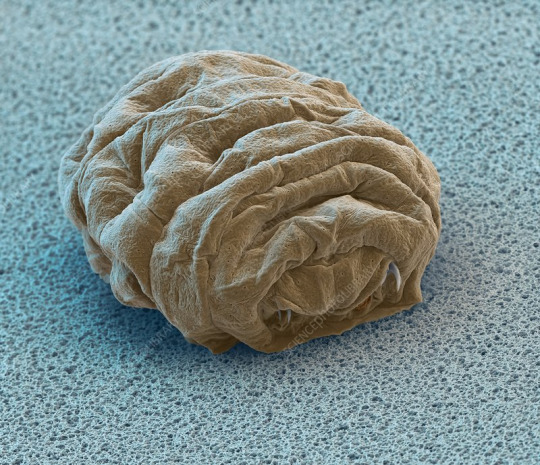
(Image: an electron microscope image of a tun - a tardigrade in cryptobiosis. It is smaller and very wrinkly, with the legs and mouth retracted into the body. End ID)
Tardigrades were the first animals to be exposed to the vacuum of space. They were exposed for 10 days, some in a state of cryptobiosis at the time of exposure and some still active. It was found that they were able to survive the vacuum when shielded from the sun's ultraviolet radiation, with those already in cryptobiosis doing better. Upon being rehydrated, many were able to resume normal life functions and successfully reproduce, though others died after being rehydrated. Those that were exposed to UV radiation fared much worse, with only a few hydrated individuals surviving. The individuals in cryptobiosis had a lower survival rate when exposed to UV than those not exposed to UV and were less successful at reproducing afterwards. Studies of tardigrade's space survival abilities and resistance to radiation could go a long way in helping human space travel. One of the largest dangers of space travel is that space is full of nasty radiation from the sun that Earth's magnetic field protects us from. Some scientists speculate about the possibility of accidentally seeding other planets or moons with tardigrades or other space-resistant organisms. This is a problem because introducing Earth life to other world has the potential to damage any native ecosystems and if we find life in space in the future we don't want to have to figure out if it's something we accidentally put there. While tardigrades could likely survive on other planets, they would eventually die without a food source. Some sources reported that tardigrades may have colonized the moon after an experiment with them crashed. Unfortunately, the moon is not crawling with tardigrades now. It's way too dry for them to exit cryptobiosis even if they survived the crash, which they probably didn't.

(Image: art of a tardigrade floating in the vacuum of space. End ID. Source: University of California - Santa Barbara)
#wet beast wednesday#tardigrade#water bear#moss piglet#micro animal#microbiology#marine biology#biology#zoology#ecology#animal facts#informative#science#space#astrobiology#radiation#cryptobiosis#tun#image described
193 notes
·
View notes
Text
Phylum #14: Tardigrada, the water bears!
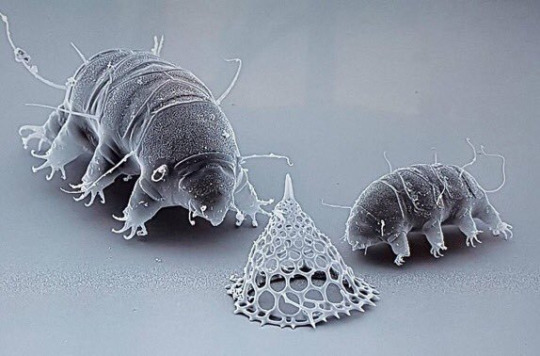
With humans, the only creatures to have reached the Moon alive are small, inconspicuous eight-legged creatures. But they are not spiders, or arthropods for that matter. While still their ancient relatives, tardigrades have followed a very different evolutionary path.
Tardigrades are part of our third and last ecdysozoan group, panarthropods - with a segmented body bearing multiple pairs of limbs. However, most of the tardigrade body isn't homologous to the arthropod one! Instead, most of their limbs correspond to what would become antennas and mouthparts in arthropods, functionally making them a giant head with two back limbs!
Most famous for surviving extreme conditions, from near-absolute zero temperatures to immense pressures or the vacuum of space, tardigrades achieve this thanks to a special capability called cryptobiosis. By entering a dehydrated "tun state", they preserve themselves while nearly stopping their metabolism, and can be revived decades later in perfect health! While they survived on the surface of the Moon, they do not thrive in those extreme conditions, only being dormant - in fact, they prefer moist environments like mosses or hot springs!
Fancy a mystery? Tardigrades today are divided into two main classes - the plump Eutardigrada and the armored Heterotardigrada. However, a third class, Mesotardigrada, was discovered in 1937, with a single specimen found in a hot spring near Mount Unzen, Japan. Of unique appearance among tardigrades, it was never found again despite repeated searches, and the type locality was destroyed years later.
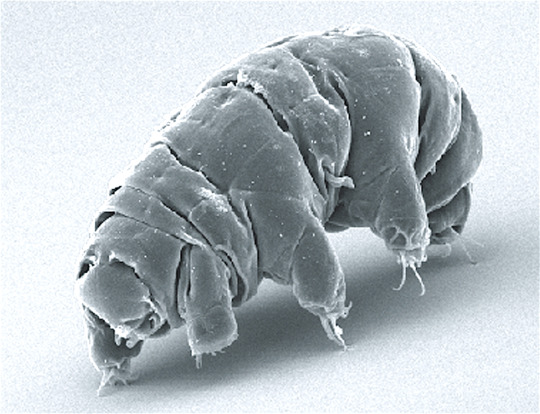

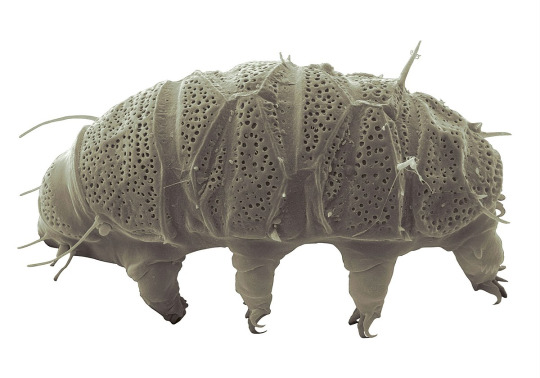

62 notes
·
View notes
Note
we need a poll for a monophyletic definition of "bug"
it can be anything from "any animal is a bug" to "only hemipterans are bugs" :p
(if you're taking suggestions, then animalia, protostomia, ecdysozoa, panarthropoda, arthropoda, hexapoda, insecta, pterygota, hemiptera)
See, I want to do that poll, especially bc I know I've been very vert-centric (sue me, my training is in vert paleo); but I know I've already seen that poll outside of palaeoblr???
14 notes
·
View notes
Text
I'm sorry to be all "uH/\/\ A(HSTUaLLY" but this, let's me say the most interesting things about Velvet worm: They're not insects! They're not "bugs". They're not even a part of the Athropods, the clade that contains myriapods (centipedes & millipedes), crustaceans, arachnids, and insects Velvet worms are animals of the phylum Onychiphora (Claw Tipped), which are a group closely related to arthropods. Their exact interelationship is still a bit messy at the moment, but together, the Onychiphora Arthropods and Tardigrades (water bears) make up the Panarthropod clade.

#velvet worms#onychophora#insects#myriapods#arachnids#crustaceans#arthropods#water bears#tardigrades#panarthropods#ecdysozoa#bilaterians#paraHoxozoa#animals#bugs#moss piglet
774 notes
·
View notes
Text
Saw this:

Needed to know.
The endocannabinoid system exerts an important neuromodulatory role in mammals. Knockout mice lacking cannabinoid (CB) receptors exhibit significant morbidity. The endocannabinoid system also appears to be phylogenetically ancient--it occurs in mammals, birds, amphibians, fish, sea urchins, leeches, mussels, and even the most primitive animal with a nerve network, the Hydra. The presence of CB receptors, however, has not been examined in terrestrial invertebrates (or any member of the Ecdysozoa). Surprisingly, we found no specific binding of the synthetic CB ligands [(3)H]CP55,940 and [(3)H]SR141716A in a panel of insects: Apis mellifera, Drosophila melanogaster, Gerris marginatus, Spodoptera frugiperda, and Zophobas atratus. A lack of functional CB receptors was confirmed by the inability of tetrahydrocannabinol (THC) and HU210 to activate G-proteins in insect tissues, utilizing a guanosine-5'-O-(3-[(35)]thio)-triphosphate (GTP gamma S) assay. No orthologs of human CB receptors were located in the Drosophila genome, nor did we find orthologs of fatty acid amide hydrolase. This loss of CB receptors appears to be unique in the field of comparative neurobiology. No other known mammalian neuroreceptor is understood to be missing in insects. We hypothesized that CB receptors were lost in insects because of a dearth of ligands; endogenous CB ligands are metabolites of arachidonic acid, and insects produce little or no arachidonic acid or endocannabinoid ligands, such as anandamide.[1]
TLDR: they can't get high as they lack the necessary receptors for it.
3 notes
·
View notes
Photo
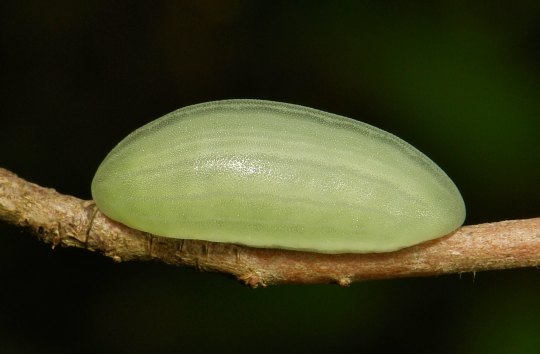
Cup moth caterpillar (Limacodidae)
Photo by itchydogimages
#unidentifiable#cup moth#caterpillar#limacodidae#zygaenoidea#apoditrysia#ditrysia#heteroneura#glossata#lepidoptera#insecta#hexapoda#pancrustacea#arthropoda#panarthropoda#ecdysozoa
15K notes
·
View notes
Photo

Cambrian Explosion #57: Tuzoiida
What were tuzoiids?
We don't know.*
Despite hundreds of specimens having been found, and around 20 different species being described, these arthropods are an ongoing puzzle.
They're known from between about 518 and 505 million years ago, in deposits associated with tropical and subtropical regions all around the world. They had large spiny bivalved carapaces up to 18cm long (7"), shaped like an upside-down domed taco shell, with a distinctive reticulated net-like surface ornamentation – but the rest of their ecology and anatomy is very unclear.
Most fossils are just empty carapaces, which appear to have been made of unmineralized chitin. Rare examples of soft-part preservation show they had a pair of stalked eyes sticking out the front, and a pair of short simple antennae, but impressions of the rest of their bodies are fragmentary and indistinct enough to not be particularly helpful.
They may have been related to the similar-looking isoxyids, or they might have closer affinities to the pancrustaceans or possibly even the equally enigmatic thylacocephalans.
Unless we find some better fossils with clearer anatomy, they're going to remain a mystery.
Tuzoia canadensis was one of the pointier-looking tuzoiids, known from the Canadian Burgess Shale deposits (~508 million years ago). About 10cm long (4"), its carapace was lined with many long spines, with a more prominent spiky side frill than most other species.
Its reticulated ornamentation had fairly large polygonal facets, and like in other tuzoiids this is thought to have had a strengthening function – allowing it to create a large but very thin carapace with enough structural integrity to hold its shape.
———
* Edit: As of 2022, tuzoiid soft tissues have been found! Turns out they're early mandibulates and probably closely related to hymenocarines.
———
Nix Illustration | Tumblr | Twitter | Patreon
#science illustration#paleontology#paleoart#palaeoblr#cambrian explosion#cambrian explosion 2021#rise of the arthropods#tuzoia#tuzoiida#mandibulata#maybe#euarthropoda#arthropod#panarthropoda#ecdysozoa#protostome#bilateria#eumetazoa#animalia#art#MYSTERY TACO
362 notes
·
View notes
Photo
@koopaspiderofdarkness

the hell
#tw insects#crustaceans#ecdysozoa#invertebrates#Arthropoda#malacostraca#decapoda#Cute Stuff#why he like that!!!!
17K notes
·
View notes
Text
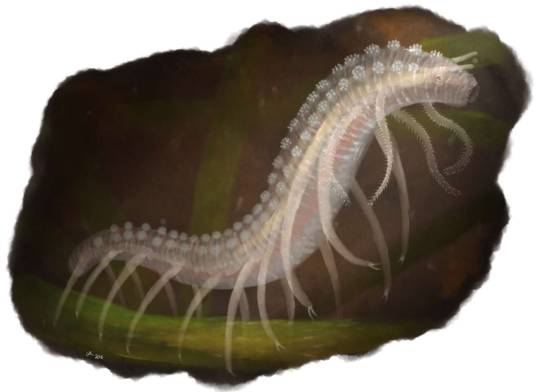
Thanahita
Thanahita distos – вид лобоподів (лат. Lobopoda) з середнього силуру Великобританії (~ 430 млн. років тому). Лобоподи (лат. Lobopoda, від грец. Λοβός – частка і πούς – нога) – надтип безхребетних з групи линяючих (Ecdysozoa). Тварини з сегментова��им тілом і нечленованими кінцівками. Сучасні представники лобопод: оніхофори і тихоходи. Викопні рештки відомі з відкладень, починаючи з…
Повний текст на сайті "Вимерлий світ":
https://extinctworld.in.ua/thanahita/
#paleontology#extinct animals#prehistoric#paleoart#палеоарт#палеонтологія#вимерлі тварини#silurian#thanahita#доісторичні істоти#great britain#lobopoda#ecdysozoa#ukraineposts#made in ukraine#ukraine
17 notes
·
View notes
Text
Phylum #12: Nematoda, the roundworms!

Imagine for one second if the entire world disappeared. Except for roundworms. Then, we would still see through them the ghostly outlines of forests, rivers, cities, and even people. Numbering in the hundred billion billions, nematodes are by far the most abundant phylum on Earth. Easily overlooked, but truly everywhere.
With their abundance comes a huge amount of different species. More than 20 thousand species are already known, with more than a million estimated to exist in total. Either parasitic or free-living, they are found in virtually every environment, from the poles to the tropics and from mountaintops to seafloor.
Most are superficially very similar, sharing the same round worm body plan with a soft, unsegmented cuticle that must be shed. This phenomenon, called cryptic diversity, is also known from other phyla like placozoans. A single morphological "species" can easily reveal itself to be a massive lineage of genetically distinct species.
Despite the staggering amount of nematode species, one in particular is crucial to scientific research. Caenorhabditis elegans is the prototypical model organism, having had its genome sequenced and the fate of every single one of its cells determined, including its connectome or "neuron map". From spaceflight to medical research, C. elegans has been at the forefront of numerous studies, making it possibly the most well-understood animal ever.

51 notes
·
View notes
Note
Of the bugs that molt, do they have increased motion/running when they're getting ready to molt, similar to some reptiles?
bugs that molt = Ecdysozoa = arthropods, nematodes, velvet worms, tardigrades, some other weird little guys. I don’t really know how any behave firsthand except for the arthropods I’ve kept.
sort of depends on the species but in many cases it’s precisely the opposite. tarantulas actually flip on their backs and remain motionless for hours prior to molting, centipedes get very stiff (and turn yellowish due to the new cuticle separating from the old) in premolt and in my experience tend to fast for a good few weeks before ecdysis. millipedes even more so; they’ll burrow as deep as they can and might not come up for another month, sporting a fresh new exoskeleton. some mantises might not move for a day or more if they find a good spot to hang to molt, and like many insects anchor their feet in place before molting so that they can cling to good solid footing—their own exuvia—as they emerge.
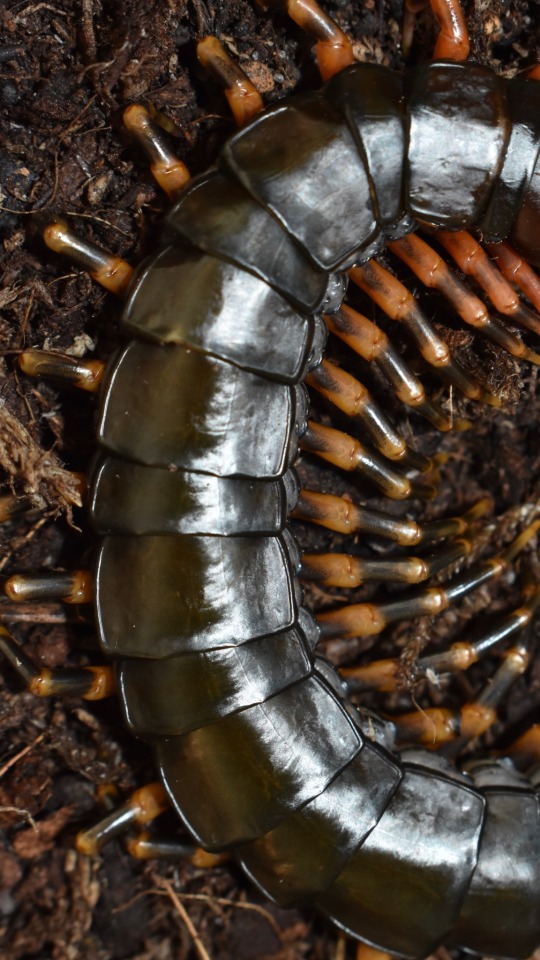
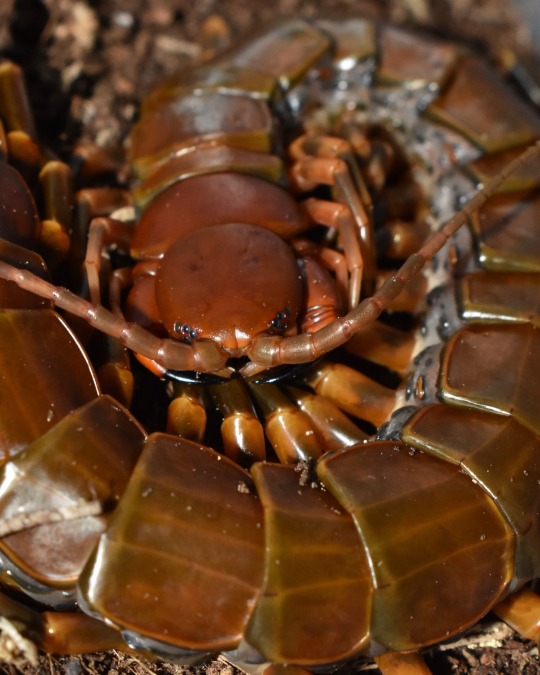
(Scolopendra hainanum between molts and one in premolt, with the old yellowed exoskeleton separating)
isopods with their weird biphasic molt are different, and besides the actual process of shedding + 10-30 min of drying, they just get on with their lives before and after. they have it easy! same with things like maggots and other soft-bodied larvae, their exoskeletons are basically thin cellophane and are easy to wiggle out of and it doesn’t slow them down much.
for some aquatic arthropods it’s a bit different, Triops molt by thrashing themselves out of their old skins & it only takes a few seconds sometimes! but for other aquatic creatures with more well developed shells, like lobsters and big crabs, molting is quite laborious and lengthy even with the added support of water.
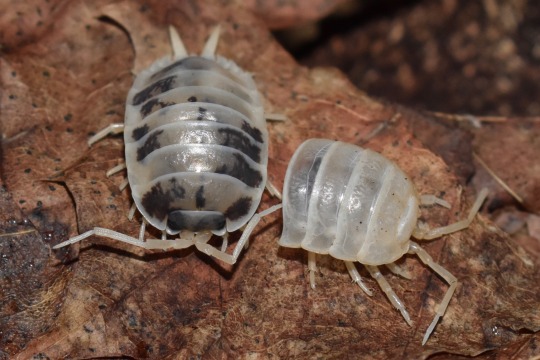

(Porcellio laevis “Dairy Cow” with his anterior exuvia, Scolopendra hainanum the middle of ecdysis w/ respiratory tract lining “strings” visible)
molting for reptiles literally is shedding some skin, but molting for arthropods is shedding a skeleton and then some! since a soft new exoskeleton is grown beneath the old one, but before it’s shed the animal has to sit inside a now too-small, very rigid suit of armor, I would assume the general pattern is for arthropods to move less before molting. the lining of the respiratory tract and some of the other internal organs that are part of the cuticle also get molted, plus legs/appendages can get stuck in molt, so also best to find somewhere safe and not leave until hardened up!
a good example of this might be cicadas, which emerge from the ground as nymphs, climb to find a perch, and then don’t move at all except for the muscular contractions needed to break free of the exuvia. that’s why cicada shells are often posed in curious ways—they’re a snapshot frozen in time of a cicada’s last moments as a juvenile.
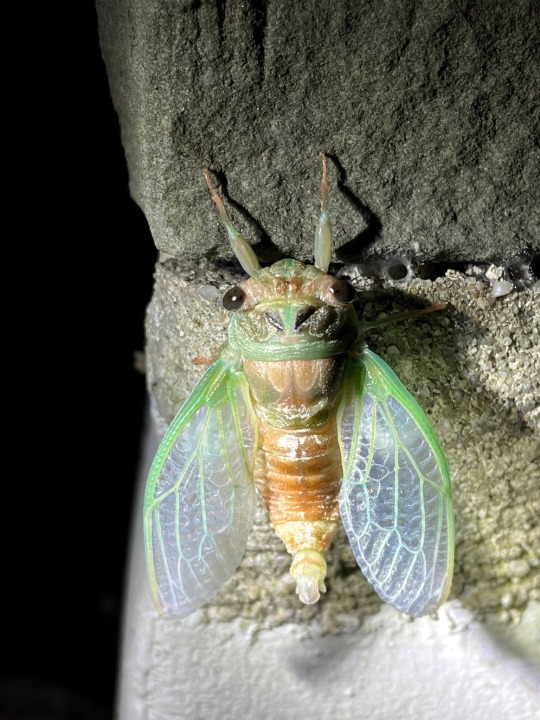
(teneral Neotibicen linnei)
124 notes
·
View notes
Text
@koopaspiderofdarkness SHRIMP CONFERENCE

[x]
#malacostraca#decapoda#crustaceans#Arthropoda#ecdysozoa#invertebrates#tw insects#Cute Stuff#i have NO idea why they're doin this but this is really funny to me
13K notes
·
View notes
Photo
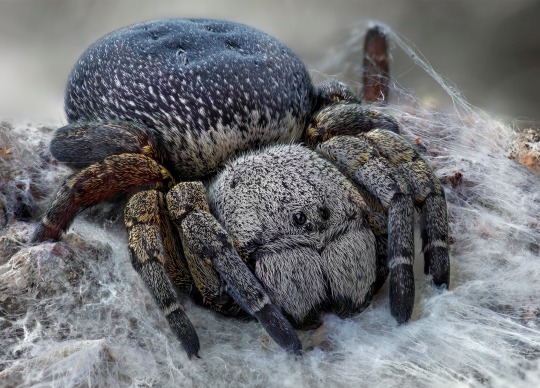
Ladybird spider (Eresus kollari)
Photo by Armen Seropian
#ladybird spider#velvet spider#eresus kollari#eresus#eresidae#entelegynae#araneoclada#opisthothelae#araneomorphae#aranae#arachnida#euchelicerata#chelicerata#arthropoda#ecdysozoa
9K notes
·
View notes